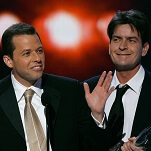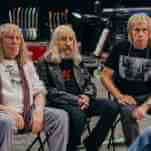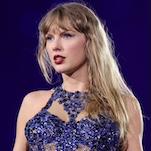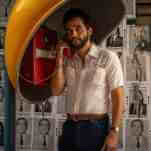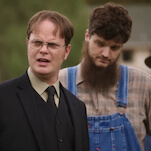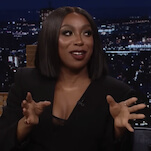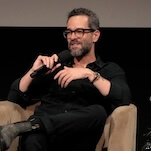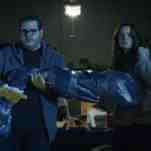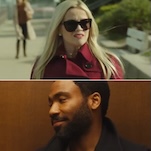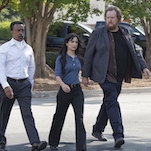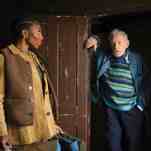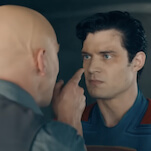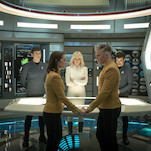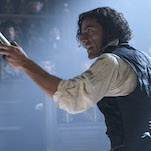When it comes to breadth of material for monthly comics, Image Comics is hard to beat. Here are quick descriptions of some of the books released by Image just this week: Birthright, a family drama about a missing boy who returns to his family as a grizzled fantasy warrior; Chew, a comedic crime series following a detective that gets psychic impressions from what he eats; Five Ghosts, a pulp-inspired action adventure featuring a lead hero possessed by the spirits of five famous literary characters; God Hates Astronauts, an irreverent humor comic starring superheroes and space aliens; Low, an underwater science-fiction tale detailing a mother’s desperate attempts to save her family; and Penny Dora & The Wishing Box, an all-ages modern take on the myth of Pandora’s Box. Image is delivering a huge range of titles every week, and diversifying its output has contributed to the publisher’s dramatic rise to prominence in the last few years.
Image releases two comics this week that have animal casts, but the titles are completely different. The Autumnlands: Tooth & Claw (newly renamed because of trademark issues) is a sprawling high fantasy with a huge array of anthropomorphized wildlife characters, whereas The Humans is a smaller-scale story focusing on a motorcycle gang of primates in post-Vietnam War America. The Humans has the kind of crazy concept that immediately piques curiosity, and the book’s creative team has done phenomenal work making this book a fascinating exploration of a turbulent time in American history.
After receiving a threat from a police officer that remembers him from the old days, Johnny makes his way toward his old friends, a walk that sparks memories of his time marching during Army boot camp. Those recollections build to a dramatic two-page spread showing Johnny’s drill sergeant barking orders that radiate from his giant head in beams of text, with the spaces between those strips detailing different stages of Johnny’s training. It’s a visual that concisely conveys a huge amount of information, and this creative team is proving to be especially adept at these narratively dense, visually impactful spreads. The training sequence makes great use of artist Tom Neely’s hand-lettering with bold streams of thick crimson letters capturing the intensity of the drill sergeant’s yelling, and colorist Kristina Collantes brings even more force to the image by alternating between fiery red and sickly yellow, colors that highlight Johnny’s anger and disgust toward his past experience.
For most of the issue, Collantes uses a palette that is largely restricted to earth tones and primary colors, a deliberate choice that creates a point of contrast for the final pages, which explode in a psychedelic mix of every color in the rainbow. That major shift comes after Johnny proudly, publicly proclaims his return to his old gang, reflecting the way his life immediately changes when he falls back into this glorious world of sex, drugs, and rock ’n’ roll. With no text, that sequence is another exceptional example of how well this creative team handles a two-page spread, creating a hallucinatory visual that combines images of Johnny’s real-world debauchery with Eastern religious iconography, keeping the chimp’s Vietnam experience in the picture as he tries to escape it with a mind-melting mix of acid, alcohol, marijuana, and women.
The Humans #2 ends with a full-page splash of Johnny lying naked in a bed, eyes bulging, tongue hanging out of his mouth, and a raging hard-on between his legs as four undressed woman surround him. It’s an image that is all about heat; clouds of warm pink, yellow, orange, and red float in the background, and the bed cover is red with yellow stripes. The restricted color palette of all the preceding events brings incredible power to these vibrant final images, accelerating the book’s forward momentum after an issue that moved at a slower pace.
But that pace is exactly what Keenan Marshall Keller’s story needs. The first issue was a lot of fun, but it wasn’t all that substantial in terms of character development. Narrowing the focus to really commit to Johnny in the second chapter brings much more depth to the narrative, and his Vietnam-related PTSD adds a political edge to the title. (The Vietnam War material looks to be an important part of the series moving forward, with next issue delving deeper into Johnny’s overseas experience by flashing back to his time in battle.) The conversation between Johnny and his brother Bobby is where Keller dramatically increases the emotional weight of this story, giving the impression that these feelings of frustration and rage have been boiling up inside Johnny for a while, aching to burst free.
Neely is an unabashed Popeye fan, and his artwork combines the expressive cartooning of E.C. Segar with a gritty realism reminiscent of Farel Dalrymple, creating a grounded world full of wonderfully animated, strikingly designed characters. He does remarkable work realizing the time period through clothing, hair, automobiles, and architecture, and he brings extra comedy to the story with his primate-related names for businesses like “Dunston’s Inn” and “Mighty Joe’s Junk Yard.” Neely shows a huge range of talent on this series, from his evocative hand-lettering to his subtle character work and striking page designs for the two-page spreads, and a big part of this book’s thrill is seeing how Keller’s scripts push the artist.
Image Comics is leading the pack in terms of publication design for monthly ongoing comic books, and The Humans is one of many impeccably put together titles. Image is a publisher that realizes single issues should stand on their own rather than just being chapters of a story that will eventually be available in a collected edition, and it has given its creators the freedom to control every aspect of the design to make their books as distinct as possible. The creative teams are in charge of logos, paper stock, ads, and back matter, which helps give each book its own personality and style.
The Humans #2 has almost no ads except for a Bitch Planet promo on the inside back cover, and the outside back cover is an image by Johnny Ryan showing one of the biker apes strangling a nerd with a chain. The back matter content is made to look like the gang’s official newsletter, devoting space to letters as well as fan art, jokes, creator notes, and information on the book’s original soundtrack. That last bit is one of the coolest things about this title: It has a Soundcloud page that is updated monthly with new songs inspired by this concept. (The songs from this week’s issue are peppered throughout this review.) The addition of a musical element shows just how devoted this creative team is to making The Humans a multifaceted reading experience, and that dedication has made the title stand out in Image’s increasingly crowded lineup of remarkable comics.
